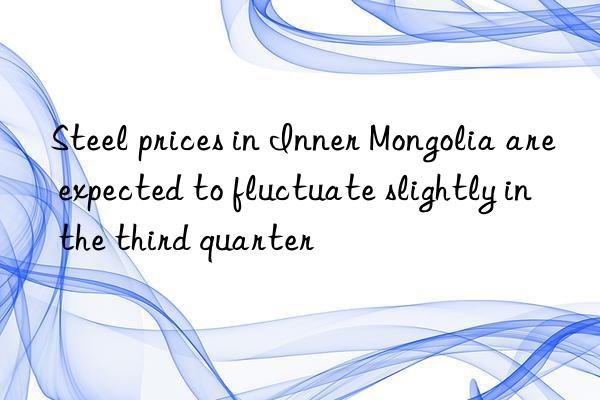
From January to June, steel prices in Inner Mongolia fluctuated slightly. From the perspective of monthly price level changes, from January to March, with the adjustment of epidemic prevention and control measures, market expectations continued to improve, and a number of major projects in various places were steadily promoted. Both traditional infrastructure and new infrastructure were launched, and superimposed macro policies continued to be implemented. , Enterprises' enthusiasm for production has increased. At the same time, raw material prices have continued to rise, the center of cost has continued to move upward, and steel prices have continued to rise slightly.
From April to May, the steel market demand continued to recover, but the recovery was not as strong as expected by enterprises. The performance of the real estate industry was sluggish. Prices of raw materials such as coke and coke have dropped significantly, and the steel market has a period of strong supply and weak demand, and prices have continued to fall.
In June, the hot and rainy weather increased, the downstream construction progress was slow, and the transactions in most markets were weak, and the steel market entered the traditional off-season of demand. However, stimulated by the improvement of macro expectations, the prices of superimposed raw materials such as iron ore and coke have generally stopped falling and stabilized, and the center of gravity of costs has moved up again, causing steel prices to rebound and stabilize.
In June, the comprehensive average prices of construction steel and ordinary plates in the whole region were 3926.11 yuan and 4305.71 yuan per ton respectively. Compared with May, the price of construction steel products increased slightly by 0.87%, and the price of ordinary plates decreased slightly by 0.48%. Compared with the beginning of the year, the prices of construction steel products and ordinary plates decreased by 3.94% and 2.74% respectively.
From the perspective of overall price changes, the comprehensive average prices of construction steel and ordinary plates in the first half of 2023 are 4110.06 yuan and 4440.45 yuan respectively. Compared with the first half of 2022, the prices of construction steel and ordinary plates have dropped by 17.22 yuan respectively %, 17.24%.
The current political and economic situation in the world is complicated, which has brought many impacts on my country's development. However, under the complicated and severe external environment, my country's economy is still showing a positive trend of recovery. It achieved a good start in the first quarter and continued to recover in the second quarter. In June, the manufacturing PMI rebounded month-on-month, and a series of positive macroeconomic stimulus policies have been implemented one after another: central bank interest rate cuts, real estate regulation, increase in the amount of provident fund loans, and enhanced end demand. The foundation for economic recovery is constantly consolidating, and it also boosts market confidence. , but we must also see that the pressure of demand contraction is still prominent, and the main demand for steel products such as real estate and infrastructure has limited terminal growth; recently, the National Development and Reform Commission and 7 banks have established an investment-loan linkage pilot cooperation mechanism to help promote private investment and expand effective investment. , will form a strong boost to project construction in the traditional peak demand season, thereby driving the growth of steel demand; in terms of cost, the slight fluctuations in iron ore, the steady rise in scrap steel prices, and the partial implementation of the increase in coke prices all maintain cost support. Strong resilience; in terms of exports, China's steel exports are still showing an upward trend. Although the overseas manufacturing industry has declined, but in the face of weak domestic demand and the depreciation of the RMB against the US dollar, China's steel exports still have momentum. On the whole, in the third quarter, steel prices in Inner Mongolia are expected to fluctuate slightly in a stable manner.



 微信扫一扫打赏
微信扫一扫打赏
